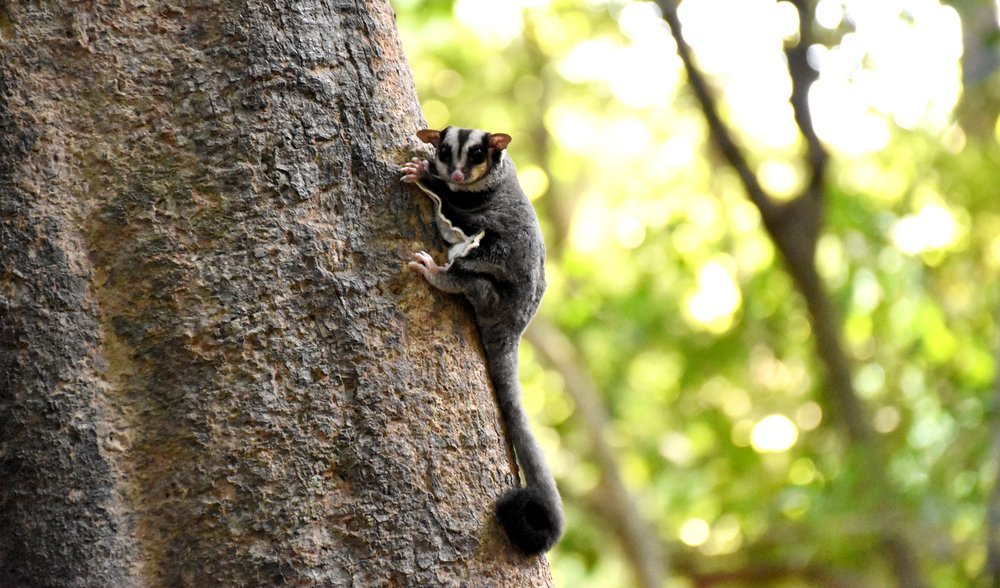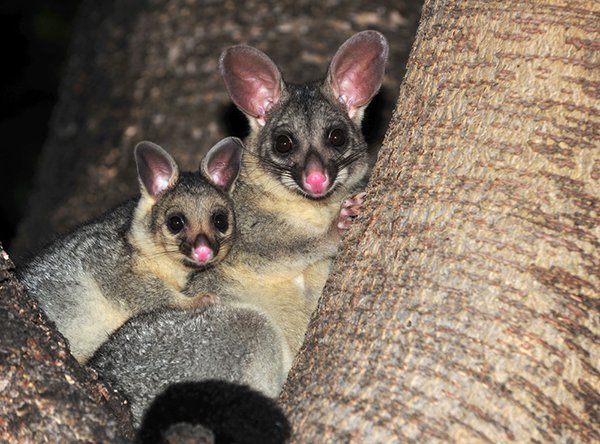The native animals you’ll find in an Aussie backyard

THERE ARE CLUES everywhere — droppings on the lawn in the early morning; a flash of colour in the tree canopy; furtive scuffling in the bushes by the rubbish bin at night. Although you may not be aware of it, your backyard could be feed-ing and housing a surprising range of native Australian animals.
1. Southern Boobook
Ninox novaeseelandiae

(Image Credit: Bojangles/Shuttershock)
Australia’s smallest owl (with a maximum height of 36cm) also goes by the names mopoke or morepork. All these monikers attempt to emulate its distinctive call. The most common and widespread owl in Australia, the southern boobook is also found in Papua New Guinea, Indonesia and New Zealand. In New Zealand, the Maori revere it as a guardian from the spirit world.
2. Brown-striped frog
Limnodynastes peronii

(Image Credit: Froggydarb/Wikimedia)
The “tock, tock” call of the brown-striped frog may have you thinking there’s a tennis match – underway in your backyard. Growing up to 65mm in length, this feisty amphibian will attempt to colonise any available water body, including roadside ditches and swimming pools, and eats almost any insect that will fit into its mouth.
3. Eastern-water dragon
Physignathus lesueni

Caption caption caption. (Image Credit: Skyring/Wikimedia)
The eastern water dragon is well adapted to suburban life, although you’ll only find one in your backyard if you have a permanent source of water, such as a pool or pond. Its tail makes up about two-thirds of its total length, which can be up to lm. If disturbed, a dragon will dive into the water, where it can remain submerged for up to 90 minutes.
4. Australian bush-turkey
Alecttira lathaml

(Image Credit: Wendy Townrow/Shuttershock)
Maligned by many a gardener for its propensity to renovate the backyard, this 65cm-tall bird will kick mulch, leaves and soil into an incubation mound up to 4m wide and 2m high. Cover the compost heap, relinquish the mulch, and enjoy watching the male assiduously maintain the mound at a constant temperature for its precious cargo of up to 16 eggs.
5. Long-nosed bandicoot
Perameles nasuta

(Image Credit: Joseph Boone/Wikimedia)
This nocturnal and solitary marsupial can grow up to 60cm long. It leaves telltale traces of its night-time visits: small, conical holes, which it digs with its forefeet while foraging for insects and worms. Residents of Tasmania share their backyards with eastern barred and southern brown bandicoots instead.
6. Sugar glider
Petaurus breviceps

Caption caption caption. (Image Credit: Praisareng/Shuttershock)
This enchanting marsupial, which grows up to 40cm long, is named for its predilection for the sweet nectar and sap of certain species of eucalypt and acacia, although it also eats insects and small vertebrates. It can glide for up to 90m using its patagium, or membrane, stretched between its fifth finger and first toe. It steers using its legs and tail.
7. Common brushtail possum
Trichosurus vulpecula

(Image Credit: Worldswildlifewonders/Shuttershock)
Most urban Aussies are familiar with the sound of a brushtail possum thundering across the roof after dark or sending the dog barmy with its nasal growl. Possums are attracted to the smorgasbord of fruit and flowers provided by our backyards, as well as the warm and leak-free comfort of our ceiling spaces. They can grow to a length of 1m and weigh up to 4kg.
8. Rainbow lorikeet
Trichoglossus moluccanus

(Image Credit: Oliver Koch/Shuttershock)
When a flock of rainbow lorikeets descends on a tree, it’s like the avian mardi gras has come to town. These flamboyant, rambunctious birds thrive on the nectar, seeds, pollen and fruit of both native and exotic plants — which explains their ubiquity in our cities. Trichoglossus, literally “hairy-tongue”, refers to the lorikeet’s bristly tongue, which helps it collect nectar from flowers.
READ MORE:
- The Aussie backyard bird count starts today.
- Top 10 birdwatching spots in Australia.
- Finding feathers in the far north.
- A birdwatchers guide to Australia.




